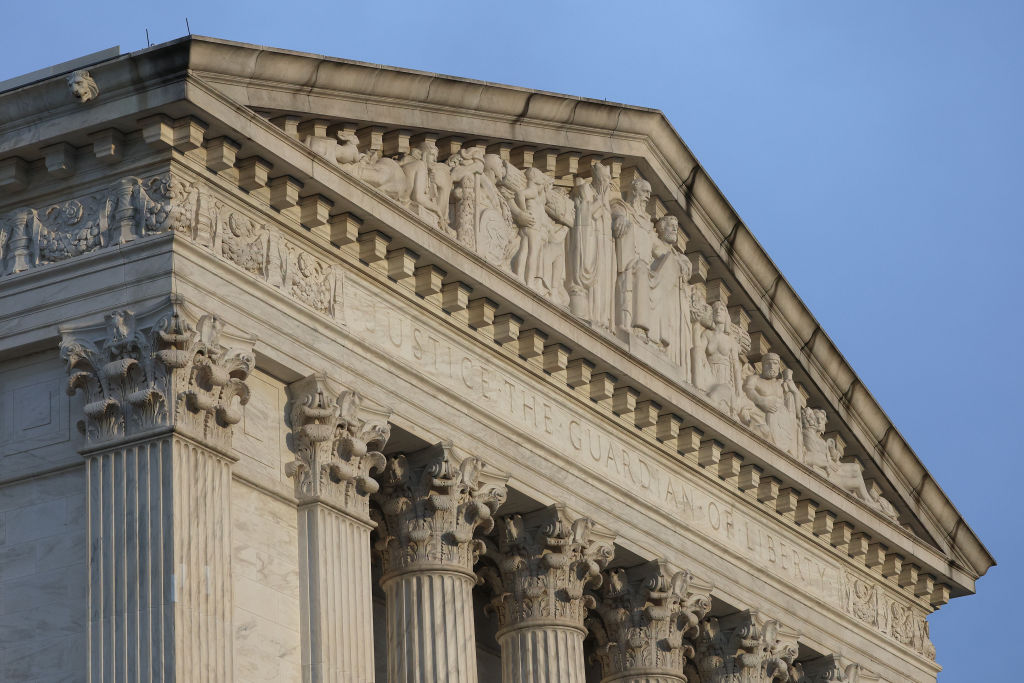Attorneys for FTC commissioner urge Supreme Court to prevent Trump’s firing of her


Lawyers for a Democratic appointee to the Federal Trade Commission on Monday urged the Supreme Court to allow her to continue to serve despite President Donald Trump’s attempt to fire her. “If the President is to be given new powers Congress has expressly and repeatedly refused to give him,” Slaughter’s lawyers wrote in a 40-page filing, “that decision should come from the people’s elected representatives. At a minimum,” they contended, “any such far-reaching decision to reverse a considered congressional policy judgment should not be made on the emergency docket.”
The dispute is the latest chapter in Trump’s test of his authority to terminate the board members at federal agencies that Congress created to be independent of the president. In late May, the Supreme Court cleared the way for Trump to fire Democratic appointees on the Merit Systems Protection Board and the National Labor Relations Board, who – like Slaughter – could only be removed “for cause.” A majority of the court then pointed to that ruling in July, when it allowed Trump to remove three of the five members of the Consumer Product Safety Commission while their challenges to their firings continued.
Slaughter was first nominated by Trump in 2018 to serve a seven-year term as one of the FTC’s five commissioners. She was then nominated by then-President Joe Biden to serve a second term, which was slated to expire in 2029.
Under federal law, the president can only remove FTC commissioners for “inefficiency, neglect of duty, or malfeasance in office.” But in March, Slaughter and another Biden-appointed commissioner, Alvaro Bedoya, were notified by email that they had been removed from the FTC. The email, which was sent on Trump’s behalf, did not indicate that they had been terminated for any of the reasons that would allow Trump to do so under federal law.
Slaughter challenged her lawsuit in federal court in Washington, D.C. (Bedoya initially joined Slaughter’s lawsuit but formally resigned from the FTC in June, citing financial reasons.) U.S. District Judge Loren AliKhan ordered the Trump administration to allow Slaughter to return to work. AliKhan pointed to the Supreme Court’s 1935 decision in Humphrey’s Executor v. United States, in which the justices upheld the FTC’s “for cause” removal statute. Although the Supreme Court in May had paused two lower-court orders requiring the Trump administration to reinstate members of the National Labor Relations Board and the Merit Systems Protection Board, AliKhan wrote, “any suggestion that Humphrey’s Executor may not extend to other agencies cannot be read as an invitation to sidestep its application to the FTC.”
The U.S. Court of Appeals for the District of Columbia Circuit declined to freeze AliKhan’s order while the government appealed. The two judges in the majority, Judges Patricia Millett and Nina Pillard, described Humphrey’s Executor as “controlling and directly on point” for Slaughter’s case.
The Trump administration came to the Supreme Court on Sept. 4, asking the justices to intervene. U.S. Solicitor General D. John Sauer called Slaughter’s case “indistinguishable” from those of the fired NLRB and MSPB officials, whose reinstatement the court blocked.
On Sept. 8, Chief Justice John Roberts issued an administrative stay, which put AliKhan’s ruling on hold to give the court time to consider Sauer’s request.
In her filing, Slaughter’s attorneys emphasized that the question at the center of her case “‘was already asked and unanimously answered by [this] Court’ in Humphrey’s Executor.” The lower courts that ruled in her favor, they continued, “are not alone; every court that has ever heard a challenge to the FTC’s removal protections has ruled the same way.” And although the Supreme Court – unlike the lower courts – can reconsider its ruling in Humphrey’s Executor, Slaughter’s lawyers noted that even the Trump administration has agreed that the court can “do so only ‘after full briefing and argument,’ not at this stage.”
Slaughter’s attorneys pushed back against the government’s contention that the Supreme Court’s 2020 decision in Seila Law v. Consumer Financial Protection Bureau, holding that the CFPB’s leadership by a single director who (like Slaughter) could only be removed for inefficiency, neglect, or malfeasance violated the Constitution’s separation of powers, authorized the president to remove government officials who exercise substantial executive power. “[R]eading Seila Law to strike down removal protections for the multimember FTC is directly contrary to both Seila Law’s explicitly limited holding and its declaration that it was ‘not revisit[ing] [its] prior decisions allowing certain limitations on the President’s removal power,’ and specifically ‘not revisit[ing] Humphrey’s Executor.’”
Moreover, Slaughter’s attorneys added, the court in Seila Law also “emphasized that whether an agency’s ‘structure’ has a ‘foothold in history or tradition’ is highly relevant to the constitutional analysis.” In this case, they wrote, “the historical record is crystal clear: the 111-year-old FTC is the quintessential ‘traditional independent agency headed by a multimember board or commission.’”
Slaughter’s lawyers similarly rejected the government’s argument that Humphrey’s Executor does not apply to her case because the current version of the FTC exercises significantly more “executive power” than the version before the court in 1935. “The development of the FTC’s authorities from Humphrey’s Executor to the present day is [] a story of continuity, not transformation,” they asserted. “As both courts below found and numerous courts have agreed, the FTC has not ‘outgrown’ Humphrey’s Executor.”
Nor, according to Slaughter’s attorneys, do the court’s orders allowing Trump to fire members of the NLRB, MSPB, and CPSC “establish[] a rule that the President is always entitled to a stay pending appeal when he has decided to terminate an official, even in direct violation of the law.” Under that theory, they said, “President Trump could remove Federal Reserve chairman Jerome Powell tomorrow without cause, obtain a stay of any judgment finding the removal unlawful, and simply let the Chairman’s term expire during the pendency of that litigation” – even though the court has “expressly acknowledged that removal protections for the Federal Reserve may be constitutional.”
Slaughter’s lawyers agreed with the Trump administration that the justices should grant review without waiting for the D.C. Circuit to weigh in. “It is of imperative public importance that any doubts concerning the constitutionality of traditional independent agencies be resolved promptly,” they stated.
Posted in Court News, Emergency appeals and applications
Cases: Trump v. Slaughter (Independent Agencies), Trump v. Slaughter